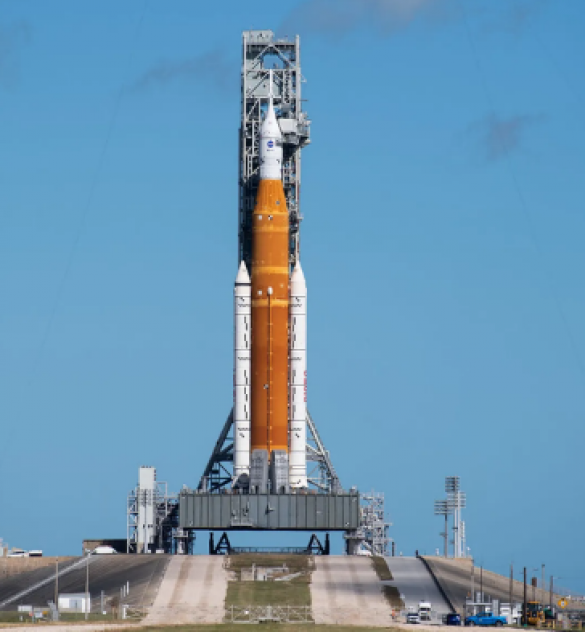
USA: For the upcoming major mission that will send astronauts to the Moon, NASA's Space Launch System (SLS) rocket appears to be prepared. With the Artemis 1 mission, it made its first launch. The rocket "met or exceeded all performance expectations" during its first flight, according to preliminary investigations. To get ready for the first crewed Artemis mission, the team is looking more closely at the rocket's performance.
A test flight of the Orion spacecraft and the SLS rocket, called Artemis 1, launched on November 16, 2022, and lasted 25 days. On December 11, the Orion spacecraft returned to Earth without incident. SLS broke the record for the most powerful rocket to launch successfully with its first flight, previously held by NASA's Saturn V rocket.
Based on evaluations done soon after the SLS rocket's launch, NASA stated that "designs are ready to support a crewed flight on Artemis 2" and that "preliminary post-flight data indicates that all SLS systems performed exceptionally." The space agency stated in a blog post that its "post-flight analysis team will continue reviewing data and conducting final reporting's."
Also Read: Trump requests restraint in support of Ukraine
The Artemis 1 flight's actual performance and predicted performance were extremely well correlated, according to SLS Program Manager John Honeycutt. The analysis of the SLS rocket's first flight puts NASA and its partners in a good position to power missions for Artemis 2 and beyond. Building and launching a rocket successfully requires both engineering and art.
To reach its conclusions about SLS' performance and readiness for crewed missions, the team examined a significant amount of data. Ground cameras, cameras on the rocket, and aerial cameras that were focused on SLS all contributed to the collection of about 31 terabytes of imagery data. For comparison, the amount of data represented by the printed books in the U.S. Library of Congress is significantly less at around 20 terabytes.
Also Read: Australia rejects the new king
According to Beth St.Peter, SLS imagery integration lead, "the numerous views of the Artemis 1 rocket, including the solid rocket booster separation and interim cryogenic propulsion stage (ICPS) separation, provided imagery data that helped us assess how SLS performed from liftoff through the ascent and separation events." The team claimed that Artemis 1 was the only way to "gather real data" during situations like booster separation.
Engineers also kept an eye on SLS's immediate post-launch exposure to extreme heat and noise. While the core stage of SLS is propelled by four RS-25 engines, the ICPS is propelled by a single RL-10 engine. The RS-25 engines' thrust and mixture ratio control valves performed within 0.5% of expectations, according to post-flight data, while other significant engine internal pressures and temperatures performed within 2% of expectations.
Additionally, the SLS core stage completed all of its tasks successfully and launched the ICPS and Orion spacecraft into an initial Earth orbit with a diameter of 1,564.4 by 25.7 kilometres. The insert, according to NASA, was well within acceptable limits despite falling just 4.6 kilometres short of the ideal bullseye target of 1,569 kilometres by 25.7 kilometres.
Also Read: An important NATO member state accuses allies of engaging in "psychological warfare."
For SLS and Orion, Artemis 1 is just the beginning. If all goes as planned, Artemis 2 will launch astronauts on a roughly 10-day lunar orbital mission in 2024. NASA will send the first woman and the first person of colour to the Moon via the Artemis expeditions. Currently scheduled for 2025, Artemis 3 will send astronauts to the Moon.